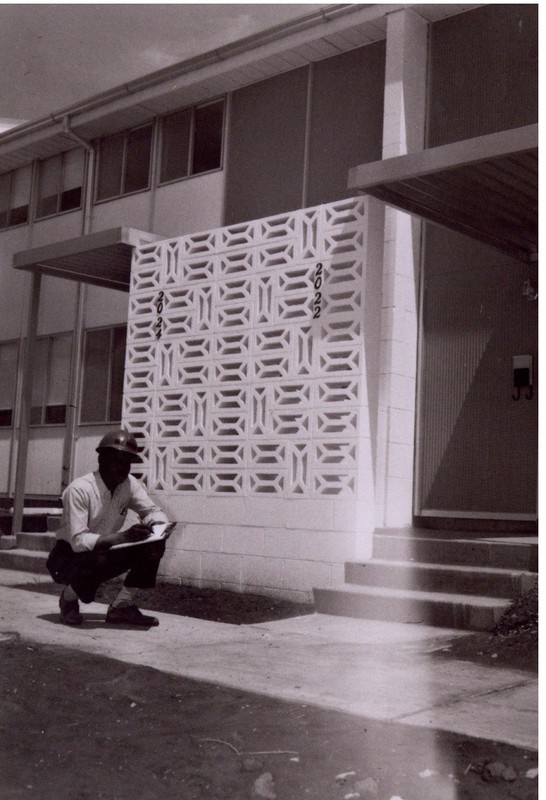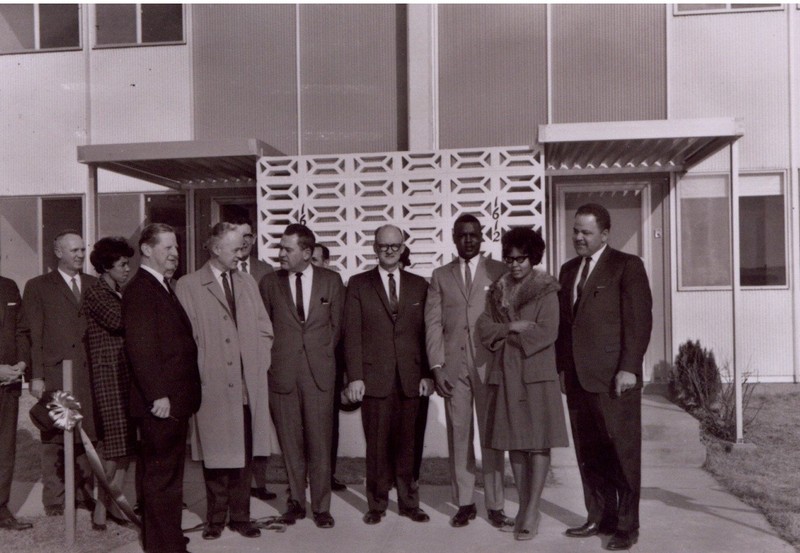Parade Park Homes
Introduction
Author-Uploaded Audio
Introduction to the neighborhood by Michael Patton; recording created by Black Archives of Mid-America
Text-to-speech Audio
Located to the east of the Parade recreation area in 18th and Vine, the neighborhood known as Parade Park Homes has been a staple of the area for several decades. Built as part of an urban renewal project in the early 1960s, Parade Park was unique from its inception. According to a 2022 KCUR article, Parade Park was "a rare instance in which an urban renewal project — a popular redevelopment tool in the 1960’s — enhanced a Black neighborhood instead of destroying it." The area was home to a historically Black neighborhood known as Attucks before being razed by developers in the 1950's, displacing the people that lived there. Though the land was initially earmarked for industrial development, a housing development was opened in 1962. The development was unique in its organization, functioning as a co-op, not a landlord-tenant setup as was more common at the time. Unfortunately as time went on, infighting among management led to deterioration of the area, which has in turn led to redevelopment prospects that some find unfavorable. Now, Parade Park stands at a crossroads, caught between a historic past and an uncertain future.
Images
Picture of Irv Myers at Parade Park homes, 1963-1964.

Picture of Bruce Watkins (rightmost) and others at Parade Park Homes, 1963-1964.

Backstory and Context
Text-to-speech Audio
The area that would become Parade Park Homes has a long history as a center of the Black community in Kansas City. Before the 1950s, the area was a neighborhood called Attucks, and was home to approximately six hundred families. When the area was demolished, most of the houses of Attucks lacked amenities such as running water or electricity. After the destruction of the existing areas, the area sat empty for the better part of the decade while developers and other invested parties decided what to do with the newly opened land. Initial plans were centered around various forms of industrial development, before planning shifted to provide a new neighborhood for those that had been displaced by the destruction of Attucks. Ground was broken for the construction of townhomes on the 11th of August, 1962. According to a KCUR article, " unlike many redevelopment projects of that time, [Parade Park] created something that actually benefited low-income people of color."
The unique element of Parade Park was that, to secure some degree of funding from the federal government, the neighborhood was built as a housing cooperative. This allowed the residents of Parade Park more control over the upkeep and management of their neighborhood, as well as setting the carrying charges (the cooperative equivalent of rent). According to KCUR, the carrying charges in the decade after Parade Park opened were approximately $66, which was very affordable to families in the area at the time. Many of the current residents moved in during the 1960s and 70s, raised their families, and have continued to reside in the area into their retirement. Several older residents are cited by KCUR as praising the safety and privacy of the area, making it a good place to raise children.
Unfortunately, there has been a downturn in the fortunes of Parade Park, as recent investigations by the U.S. Department of Housing and Urban Development have found that many of the structures suffer from leaks, mold, fire damage, and other maladies born from decades of neglect. Some of this neglect originates from time, but a substantial amount of the issues stem from a history of infighting and disagreement amongst board members, including disputes over how money should be spent and apparent inaction by various committees . Recently, the City has floated several plans to redevelop the area, though there is ongoing concern about the impact these plans would have on the people currently living in Parade Park, many of whom are low-income, elderly, or both. Thus, Parade Park finds itself in an interesting position, poised to perhaps repeat the cycle that gave birth to it in the 1960s.
Sources
Porter, Toriano. “Black-Owned Housing near 18th & Vine Set a National Example. But Now It Can’t Be Saved Read More at: Https://Www.kansascity.com/article260406207.Html#Storylink=Cpy.” Kansas City Star, April 14, 2022. https://www.kansascity.com/article260406207.html.
Shackelford-Nwanganga, Bek. “Parade Park Offered Black Kansas City Families a Chance for Home Ownership. Now It's Crumbling.” KCUR 89.3 - NPR in Kansas City. KCUR, August 10, 2022. https://www.kcur.org/history/2022-08-10/parade-park-offered-Black-kansas-city-families-a-share-of-home-ownership-now-its-crumbling.
Black Archives of Mid-America, William Fambrough, Sr. Colletion
Black Archives of Mid-America, William Fambrough, Sr. Collection
